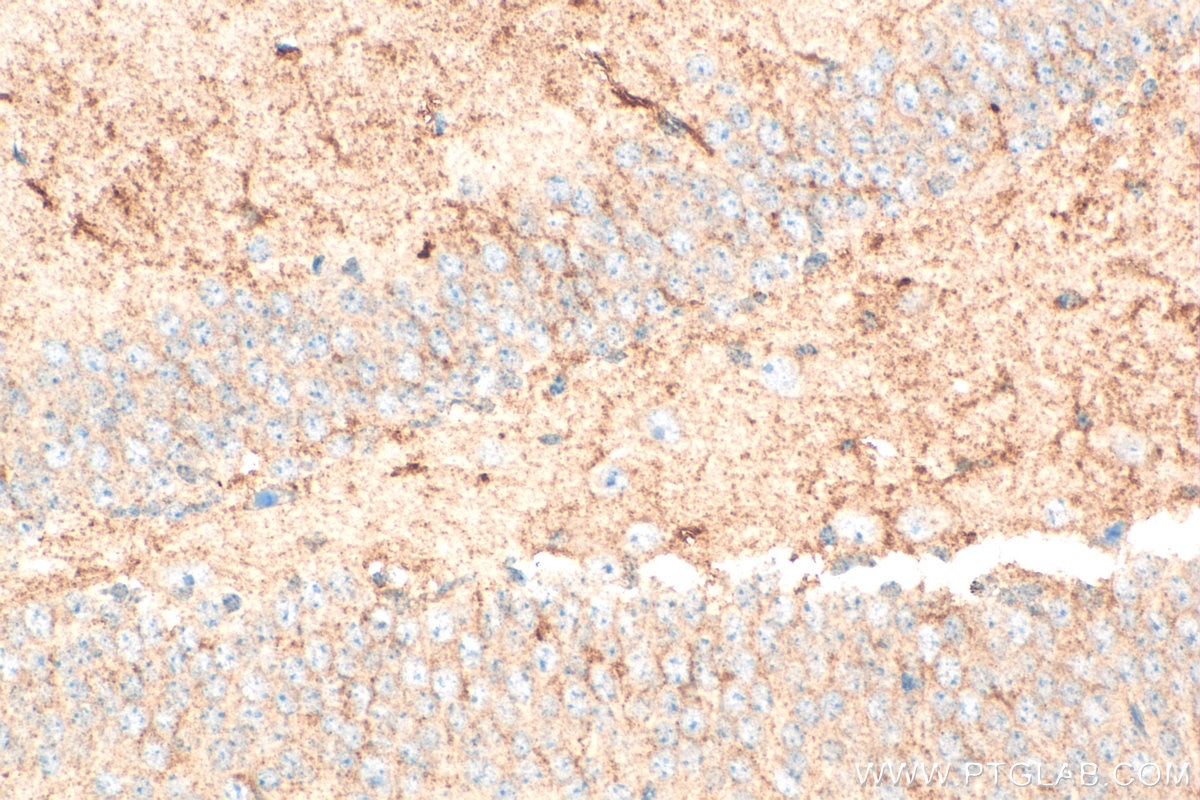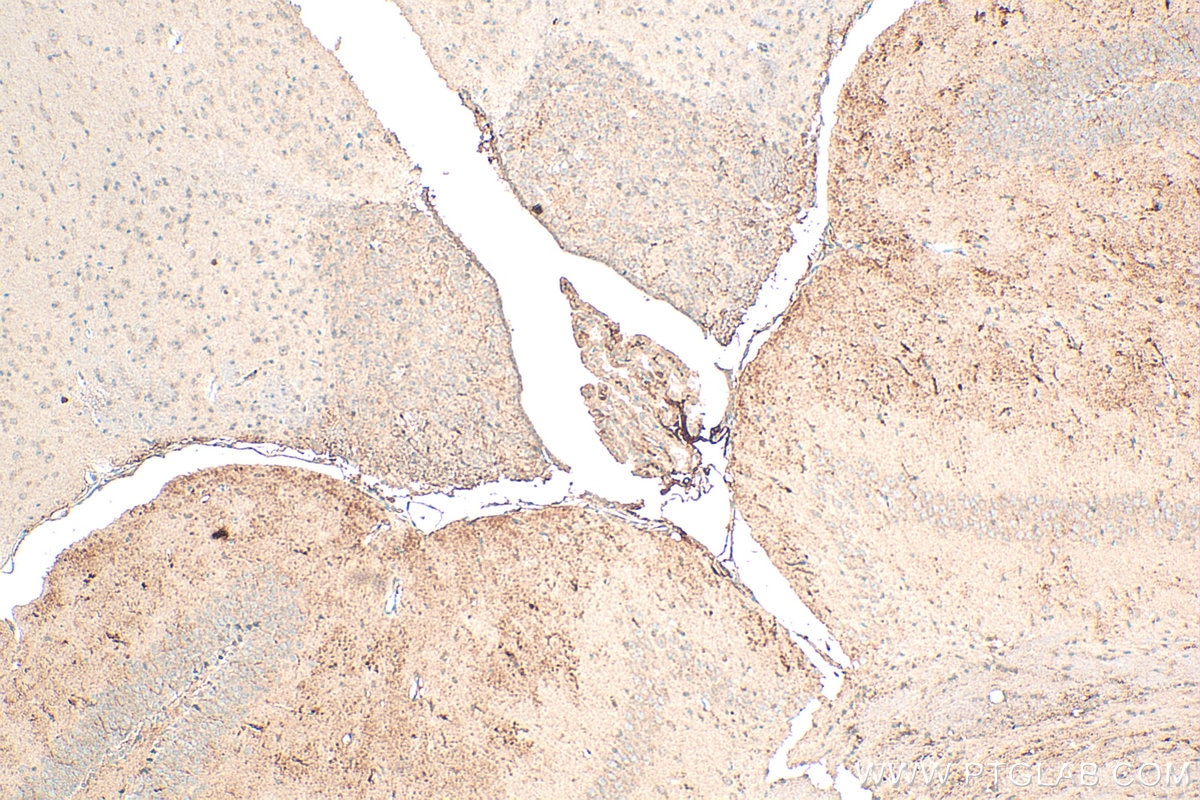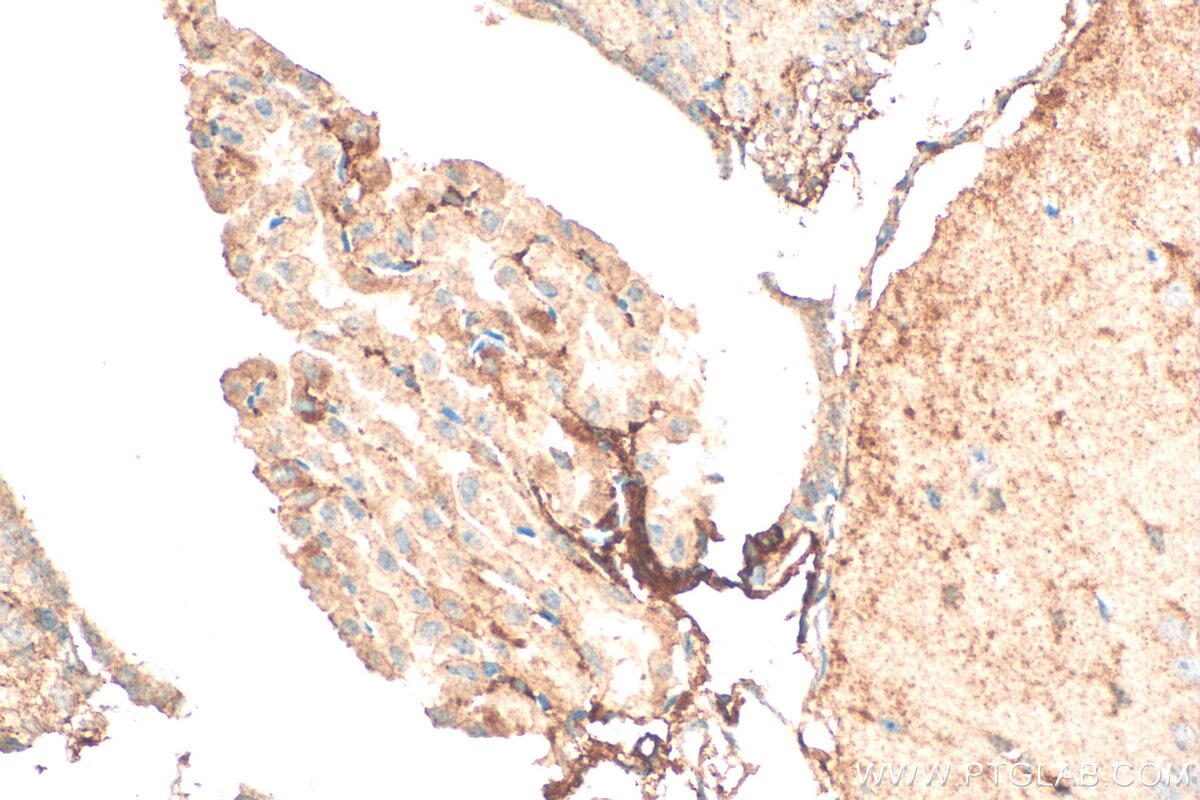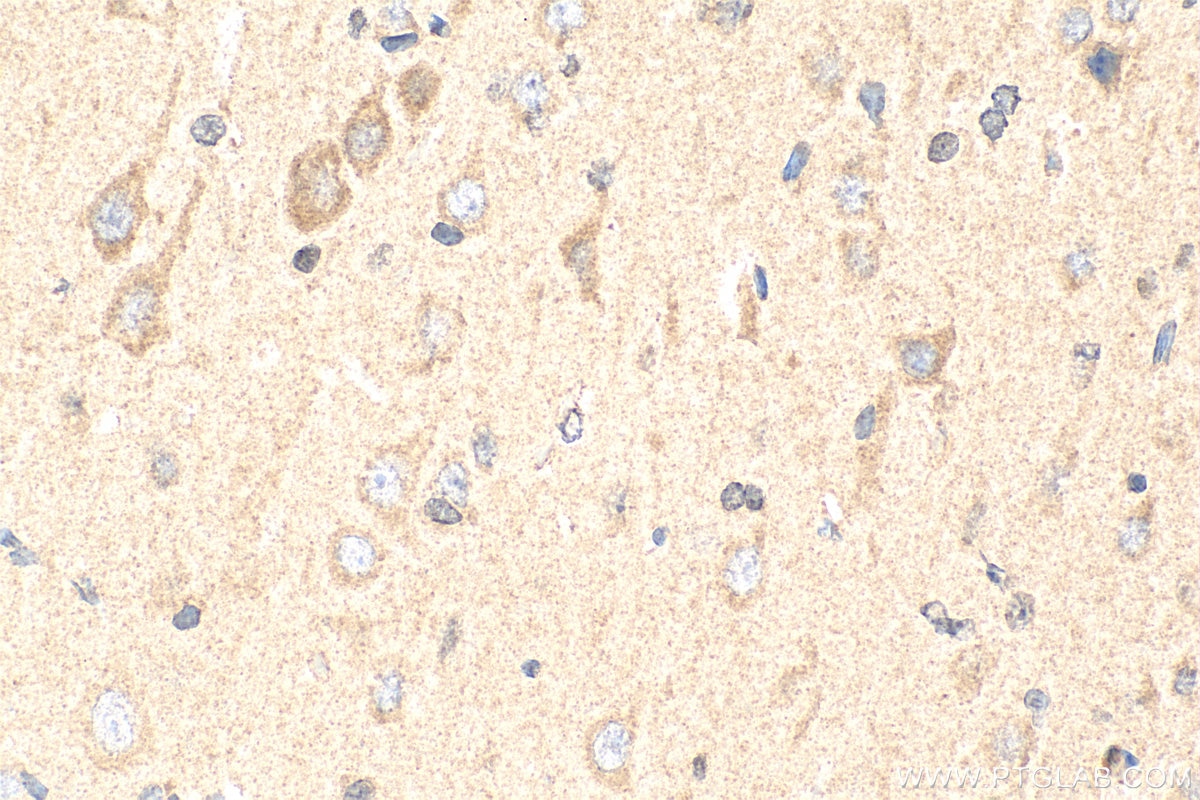Tested Applications
| Positive IHC detected in | mouse brain tissue, rat brain tissue Note: suggested antigen retrieval with TE buffer pH 9.0; (*) Alternatively, antigen retrieval may be performed with citrate buffer pH 6.0 |
| Positive IF/ICC detected in | SH-SY5Y cells |
Recommended dilution
| Application | Dilution |
|---|---|
| Immunohistochemistry (IHC) | IHC : 1:200-1:800 |
| Immunofluorescence (IF)/ICC | IF/ICC : 1:50-1:500 |
| It is recommended that this reagent should be titrated in each testing system to obtain optimal results. | |
| Sample-dependent, Check data in validation data gallery. | |
Published Applications
| WB | See 8 publications below |
| IHC | See 7 publications below |
| IF | See 2 publications below |
Product Information
18084-1-AP targets Neurotrophin 3 in WB, IHC, IF/ICC, ELISA applications and shows reactivity with human, mouse, rat samples.
| Tested Reactivity | human, mouse, rat |
| Cited Reactivity | human, mouse, rat |
| Host / Isotype | Rabbit / IgG |
| Class | Polyclonal |
| Type | Antibody |
| Immunogen |
CatNo: Ag12798 Product name: Recombinant human NTF3 protein Source: e coli.-derived, PGEX-4T Tag: GST Domain: 1-257 aa of BC069773 Sequence: MSILFYVIFLAYLRGIQGNNMDQRSLPEDSLNSLIIKLIQADILKNKLSKQMVDVKENYQSTLPKAEAPREPERGGPAKSAFQPVIAMDTELLRQQRRYNSPRVLLSDSTPLEPPPLYLMEDYVGSPVVANRTSRRKRYAEHKSHRGEYSVCDSESLWVTDKSSAIDIRGHQVTVLGEIKTGNSPVKQYFYETRCKEARPVKNGCRGIDDKHWNSQCKTSQTYVRALTSENNKLVGWRWIRIDTSCVCALSRKIGRT Predict reactive species |
| Full Name | neurotrophin 3 |
| Calculated Molecular Weight | 257 aa, 29 kDa |
| GenBank Accession Number | BC069773 |
| Gene Symbol | Neurotrophin 3 |
| Gene ID (NCBI) | 4908 |
| RRID | AB_2298715 |
| Conjugate | Unconjugated |
| Form | Liquid |
| Purification Method | Antigen affinity purification |
| UNIPROT ID | P20783 |
| Storage Buffer | PBS with 0.02% sodium azide and 50% glycerol, pH 7.3. |
| Storage Conditions | Store at -20°C. Stable for one year after shipment. Aliquoting is unnecessary for -20oC storage. 20ul sizes contain 0.1% BSA. |
Background Information
Neurotrophin-3 (NT-3) is a member of the neurotrophin family, which are growth factor proteins that play essential roles in the development and maintenance of the nervous system. NT-3 is synthesized by fibroblasts and has been extensively studied for its role in the development of neurons and neural crest-derived cells, such as melanocytes. It can bind to each of the Trk receptors (Trk-A, Trk-B, and Trk-C), but it primarily functions by binding to Trk-C, modulating intracellular signal transduction through the MAPK and PI3K-Akt pathways, which regulate melanocyte differentiation and survival.
Protocols
| Product Specific Protocols | |
|---|---|
| IF protocol for Neurotrophin 3 antibody 18084-1-AP | Download protocol |
| IHC protocol for Neurotrophin 3 antibody 18084-1-AP | Download protocol |
| WB protocol for Neurotrophin 3 antibody 18084-1-AP | Download protocol |
| Standard Protocols | |
|---|---|
| Click here to view our Standard Protocols |
Publications
| Species | Application | Title |
|---|---|---|
ACS Appl Mater Interfaces Surface Coating of Pulmonary siRNA Delivery Vectors Enabling Mucus Penetration, Cell Targeting, and Intracellular Radical Scavenging for Enhanced Acute Lung Injury Therapy. | ||
Stem Cell Res Ther NT3P75-2 gene-modified bone mesenchymal stem cells improve neurological function recovery in mouse TBI model. | ||
Invest Ophthalmol Vis Sci Alteration of Neurotrophic Factors and Innervation in Extraocular Muscles of Individuals With Concomitant Esotropia | ||
Front Pharmacol Synergic Neuroprotection Between Ligusticum Chuanxiong Hort and Borneol Against Ischemic Stroke by Neurogenesis via Modulating Reactive Astrogliosis and Maintaining the Blood-Brain Barrier. | ||
Front Genet EDN1 and NTF3 in keloid pathogenesis: computational and experimental evidence as novel diagnostic biomarkers for fibrosis and inflammation | ||
Brain Res Bull PPARα contributes to the therapeutic effect of hydrogen gas against sepsis-associated encephalopathy with the regulation to the CREB-BDNF signaling pathway and hippocampal neuron plasticity-related gene expression. |


















